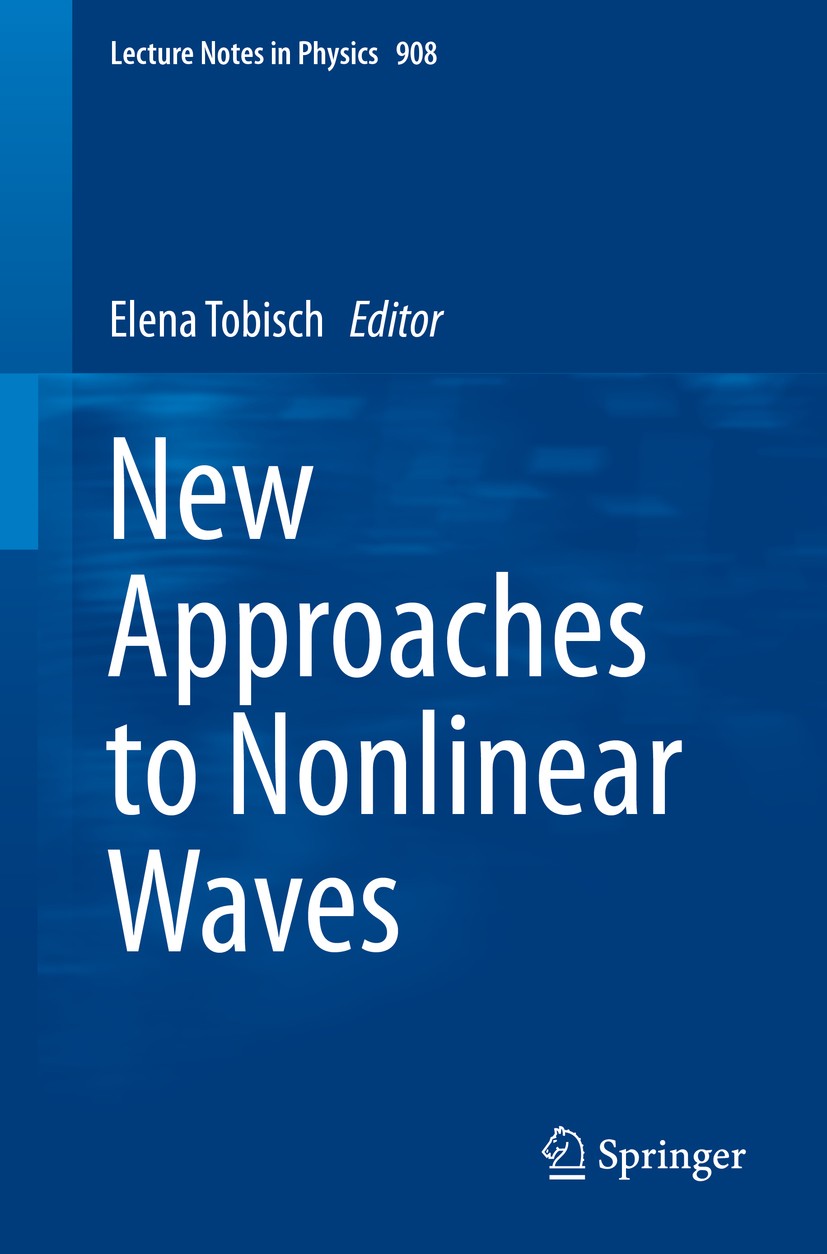| 书目名称 | New Approaches to Nonlinear Waves |
| 编辑 | Elena Tobisch |
| 视频video | http://file.papertrans.cn/665/664818/664818.mp4 |
| 概述 | Written by leading experts in nonlinear waves.Brings together theoretical, numerical and experimental approaches.With applications to real physical problems |
| 丛书名称 | Lecture Notes in Physics |
| 图书封面 |  |
| 描述 | .The book details a few of the novel methods developed in the last few years for studying various aspects of nonlinear wave systems. The introductory chapter provides a general overview, thematically linking the objects described in the book. .Two chapters are devoted to wave systems possessing resonances with linear frequencies (Chapter 2) and with nonlinear frequencies (Chapter 3)..In the next two chapters modulation instability in the KdV-type of equations is studied using rigorous mathematical methods (Chapter 4) and its possible connection to freak waves is investigated (Chapter 5). .The book goes on to demonstrate how the choice of the Hamiltonian (Chapter 6) or the Lagrangian (Chapter 7) framework allows us to gain a deeper insight into the properties of a specific wave system..The final chapter discusses problems encountered when attempting to verify the theoretical predictions using numerical or laboratory experiments..All the chapters are illustrated by ample constructive examples demonstrating the applicability of these novel methods and approaches to a wide class of evolutionary dispersive PDEs, e.g. equations from Benjamin-Oro, Boussinesq, Hasegawa-Mima, KdV-type, Kl |
| 出版日期 | Book 2016 |
| 关键词 | Dyachenko–Zakharov Equation; Efficient Conformal Map Techniques; Euler Equations; Laboratory Scale Hydr |
| 版次 | 1 |
| doi | https://doi.org/10.1007/978-3-319-20690-5 |
| isbn_softcover | 978-3-319-20689-9 |
| isbn_ebook | 978-3-319-20690-5Series ISSN 0075-8450 Series E-ISSN 1616-6361 |
| issn_series | 0075-8450 |
| copyright | Springer International Publishing Switzerland 2016 |
 |Archiver|手机版|小黑屋|
派博传思国际
( 京公网安备110108008328)
GMT+8, 2025-11-14 11:37
|Archiver|手机版|小黑屋|
派博传思国际
( 京公网安备110108008328)
GMT+8, 2025-11-14 11:37


